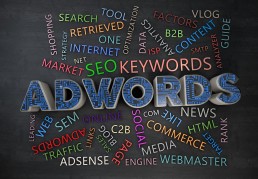Why You Need to Invest in Your Business and Buy Leads
Around 70% of customers say they would be willing to spend more on products from companies that they trust.
But in order to have customers that trust your business, you need leads. You need leads that come through your funnel, are introduced to your business, and become lifelong customers.
But how do you generate leads?
You can either have them come to your business organically, which means they find your business with a blog post, a Google search, a referral, or something else.
Or you can buy leads.
Buying leads offers a lot of benefits that you should consider for your business. It's faster than waiting for leads to come in organically and offers other benefits.
Read this guide on why you need to invest in your business and buy leads.
Buy Leads If You Don't Have a Great Funnel
If you have sales funnel in place for your business and it's not doing as well as you hoped, buying leads is a great solution.
You may not have time to redo your funnel or tweak it. You need leads fast and need them to purchase from your business.
When you buy leads, it gives you time to assess what's wrong with your funnel. You can figure out what part of the funnel, from awareness to action was a weakness.
You can figure out if your funnel needs a better lead magnet, better copywriting, or something else.
It's important to remember that buying leads shouldn't be a long-term solution. It should be a short-term solution to help you figure out what is wrong with your funnel.
The goal should always be to warm up your leads and spread awareness. But in order to reach that point, you need a funnel that is going to be effective.
That's why buying leads while you work on your funnel is an effective short-term solution.
You Have Limited Resources
If your business is in its early stages, you may have limited resources to spend on marketing and your funnel. You may not have an email campaign set up, Facebook ads, Google ads, and more.
All of that can cost a significant amount of money. That's the benefit of buying leads.
Until you have everything up and running with your funnel, you should consider buying leads. As mentioned before, they are a short-term solution.
You can generate profit by buying leads instead of waiting months for your entire funnel and marketing strategy to develop.
You Can Buy Quality Leads
While you may think buying leads doesn't produce quality leads, it actually does. When buying leads, you can specify industry, jobs, location, and more.
Some databases allow you to be as specific as interest. The more specific you are about your target audience, the more likely you'll find people interested in what you're selling.
It offers you an opportunity to have a lifelong customer.
However, it's important that when you buy quality leads, you still have a system for taking them through your sales team. You can't assume they will buy because they are more targeted.
You have to have a master sales system that can help you land these leads into clients. If you want to learn about direct sales marketing and how it can help your sales team, read the blog post here.
You Can Improve Your Sales
Buying leads also gives your sales team a chance to improve their tactics. You can figure out how to respond to leads and how to sell them on your product.
if you buy a bundle of leads, it's an opportunity to figure out your target audience before they start coming organically. It's an opportunity to practice sales calls, figure out what to say that is going to make someone buy your product.
You can also increase your conversion rate on a sales call.
You can do this by having a following-up system with an email or a phone call. Overall, buying leads helps your sales team practice with leads and generate a faster ROI.
A Faster ROI
Buying leads also helps your business generate a faster return on investment. Since most leads you buy arrive instantly, it means you can generate sales immediately.
In addition, you can figure out how much you paid for the leads and how many sales from these leads it would take to generate an ROI.
Saves Time
Finally, it's important to know that buying leads saves time. You don't have to wait for your funnel to be ready. You don't have to wait to have the perfect sales message.
Buying leads is instant and gives an opportunity to generate an ROI right away. The time you save when you are buying leads help you prioritize other parts of your business.
You can focus on lead generation, on the sales team, on a marketing strategy.
Ultimately, collecting data by buying leads can help you improve your business in every area.
Why You Should Buy Leads
Buying leads offer a short-term solution to figuring out your marketing strategy. It gives you time to figure out what part of your funnel you need to improve and how to drive in leads organically.
But buying leads is a way to help promote your business without a working funnel. When you buy leads, they are often quality and can get you a faster ROI.
If you want to see what kind of leads we offer, you can check out our website and see our data packages.
Understanding the Importance of Data Collection for Your Business
The better data you have, the better ROI you'll have for your business. That's why data and analytics are so important to your marketing and sales team for your business.
The importance of data collection is seen in your ROI and how well you know your customers.
It helps you create a strategic marketing plan around the customers. It helps you develop a driving force in sales.
But to achieve those sales, you need to understand the value of data collection.
Here's a guide that can help you see the value of data collection.
You Better Understand Your Market
The more data collected on your audience, the more you know about them that will help you figure out their needs.
With any market, you have to understand their needs. It isn't a good idea to make a guess on what they want in the market. That's why it's important to figure out a specific audience, figure out their problems, and what their needs are.
You can figure out their needs by understanding why data is important for your business.
The data should show demographics, age, location, interest, and perhaps behavior. It should help you figure out if you are targeting male or female.
By understanding this kind of data, you know who to sell to in the market. You know what kind of audience is most likely to buy from your business.
The goal is to improve the customer experience. The data allows you to do that.
The more data you have and what it says about your customer can help you change up your sales calls.
It can help you figure out what the follow-up message should look like and how often you should follow-up. It guides what your sales call script looks like.
If you want to learn more about sales calls, especially retention in your sales calls, read this blog post.
You Know What Marketing Strategies Will Work Best
The data information you have on your target audience will help you create and implement marketing strategies.
The data will help you form email marketing strategies that are more personalized. It speaks to a specific person rather than anybody.
If you were creating a Facebook campaign around your core audience, the data would help you figure out demographics and interest. You would have more success with Facebook ads because you know who you are targeting.
The cost per lead would be lower. The open and click-through rate would be higher. The overall metrics would be better.
More importantly, you know what marketing strategies would work best for your business. It's important because you wouldn't try every marketing strategy available. You would focus on what works best for your core audience.
The data can help you see what strategies your customers respond to best.
You'll see where your audience hangs out. You might notice that they hangout more on Instagram than Facebook.
Overall, you have an idea of what direction to take your marketing campaign because you'll know more about your audience from the data you've collected.
Personalization Is Key
Personalization is becoming more key in marketing and sales. It's why customers buy. They feel connected to the brand and the story it tells.
Personalization helps you tell a story in your emails, your Facebook ads, your Google Ads. It's a story about the customer and their journey.
The more data you have on your audience, the more you can tell a story about them. You can tell a story about how the product helped a customer similar to them.
You can also segment your audience based on their interest. Segmentation allows you to break your audience into more refined groups based on their interest and their choices.
Overall, when you have personalization in your marketing strategy, people feel like you relate to them. They feel like you understand their problems. That's what helps them trust your brand.
That's why data is important to create a personal message around the audience.
Data Is Key in Sales
Lastly, it's important to see how data collection affects sales. It affects how companies reach out to customers.
The sales team can look at the analytics and see how many customers are using mobile vs. desktop, opening email campaigns, clicking on marketing campaigns, and more.
You can also have a better idea of your ROI in sales when you look at data. You can see what customers are purchasing from specific campaigns.
Data can also help you predict sales trends as well as marketing trends. You can see how your audience's behavior shifts when they are shopping on mobile devices.
Data can also help you figure out when to have sales on items and when to launch a product.
Overall, data collection is important for your business because it help your business adapt. It helps your business understand who they are selling to and the problems they have.
Why You Need to Understand the Importance of Data Collection
You need to understand the importance of data collection because it helps you refine your audience and deliver a more specific marketing strategy. It helps your sales team understand who they are talking to and what their problems are.
More importantly, data collection helps shape your business because your business is designed for the customer. Your aim should be to help them, and you can help them by understanding them more.
If you want help with data collection, you can contact us here.
5 Reasons Why Small Business Should Use Google Ads to Increase Sales
Are you in the multi-level marketing business? Are you working from home but find it difficult to generate leads?
Many small businesses are struggling to find sales prospects when stuck indoors. With social distancing and quarantines, it seems impossible to meet new clients.
Even website traffic is stagnating as competition rises. Is your site dropping down Google's rankings when you need to be #1?
Now's the time to harness pay-per-click (PPC) advertising.
Google AdWords is the most popular PPC platform. Its ads appear on over two million websites and 650k+ apps. They're also listed on the world's largest search engine – Google!
If you've never used PPC before then read on. We highlight how AdWords works, how to get up and running, and how much it costs.
Here are 5 benefits of Google AdWords and how you can increase sales through PPC advertising.
1. Pay Only When They Click
Google AdWords works like this:
You create your advert and tell Google who you want to market to. Targeting your customers is key to the process. You can choose from multiple demographics including location so your ad only appears to users in your region.
Next, you set your budget cap. This is a monthly limit you're willing to spend. Google won't go over it unless you change it.
Google will display how much each ad will cost you. Most advertisers charge to place your ad on their site but Google works a little differently because...
You only pay when someone click's on your advert!
This Cost-Per-Click (CPC) system captures the customers you want at a price you can afford. Prospective sales funnel to your website or Google Maps or anywhere you choose. Ads appear in Android apps to reach an even larger market.
CPC AdWords for small business owners = full control of your online marketing spend.
2. List Number One on Google
Google is the highest-ranked search engine in the world with 92% market share.
When a user searches, the results are divided into two groups: organic and paid. Organic or natural results list websites that Google decides best-suits the search term. They're the ones all your SEO dollars aim to rank high for.
It used to be that paid results looked like ads. With a colored border and separation from organic listings, they put many users off.
Now, Google makes paid results appear like natural listings. The word 'Ad' is the only indicator that they are adverts. They show at the top of the page so are first to be seen.
In effect, your AdWord might be number one on Google.
Might be.
When a potential customer searches for your products or services Google checks your ad's criteria. If you're under budget and the keyword and customer data matches then your ad appears.
What determines the position is how much you're willing to spend per click. The higher the value the higher the odds you'll get #1.
There are other factors Google uses like the bounce rate of your clicks i.e. did people leave within seconds. They also check the quality of your ads so make sure you've no spelling errors!
3. Speedy Results
From creating a new AdWords account to creating your first campaign, your ads can appear within one business day.
A day? Surely you mean a few hours? This is the Internet, after all.
Every advert that appears on the Google network needs to be approved. This includes examining the:
- Headline
- Description
- Keywords
- Destination
- Any images and video
When you consider that a new website can take months if not years to rank on Google's first page, AdWords does pretty well. SEO is vital for your organic listings but Google ads for small business owners boost your overall rankings.
If you change your ad's content it will need to go through the approval process again.
While it goes offline remember you can create multiple adverts. Why not increase your spend on live ads until the edited one clears? Either way, you'll still retain position and gain leads to your site.
4. Full Control of Campaigns
One of the major Google AdWords benefits is having full control over your ads.
Each account can create multiple campaigns. Campaigns let you organize your ads. For example, in November you could create a campaign to target Christmas shoppers.
Each campaign comprises multiple ad groups. These let you categorize your ads and target specific products or services. Ads appear in these groups and comprise of keywords, ad text, and landing pages.
You have total control over all your ads, ad groups, and campaigns.
Christmas is over? Pause that campaign. Sold all your stock? Pause your ad group. Stock arrives in surplus? Resume the group and increase your budget.
The goal is to increase your click-through rate (CTR), retain the visitor, and convert them into a paying customer. If you find the current Google AdWords effectiveness is low you can change things immediately.
5. Benefits of Google AdWords With Targeted Marketing
One essential SEO tool that ties with the AdWords system is their Keyword Planner.
The Keyword Planner lets you discover what people are searching for. Type in a keyword/phrase and the tool displays its average monthly searches. A graph highlights trends so you'll see when the phrase is most effective.
What if your chosen keyword doesn't rank well?
The planner also suggests relevant keywords. You can choose from these to create your own list for your ad to appear under.
Most important is the top of range bid.
This shows how much ads cost for the given search term. They're divided into low and high ranges, showing the spread of ad prices over time.
A similar tool that is free for anyone to use is Google Trends. It provides geographic spread and related queries but doesn't show AdWords data.
Market the Smart Way
The benefits of Google AdWords are clear but how else do you find leads to market your company?
Combining offline and online marketing methods is the best way to promote your business. Mailshots and telemarketing along with email and mobile texts increase the likelihood of building sales.
The question is: who do you target?
At Sales Data Pro, we offer 100% quality data lists for multiple business sectors. From DNC-Compliant telemarketing numbers to real-time aged Internet leads, we've got you covered.
Our data plans include consumer data, business data, and aged Internet leads.
Contact us today to discover how our marketing data can increase your sales. Combine them with AdWords and skyrocket your bottom line.
Be smart. Market with SDP.
7 Tips for Using Mobile Marketing to Find Leads
People spend over 4 hours per day on their mobile devices. That's half of a workday or a significant amount of time in their waking day looking at their phones.
Regardless if we like it or not, people enjoy looking at their phones for instant information. They enjoy looking on social media. There's a lot of things to do on a smartphone.
That's why mobile marketing is growing with popularity. More businesses see the advantage of mobile marketing when it comes to generating leads.
If you want your business to take advantage of mobile marketing, you should consider these 7 tips.
1. Strategic Call-to-Action
If you're trying to land more leads, you should consider testing different call-to-actions. You want the consumer to click and input their information. It's as simple as that.
Sometimes being direct and saying "your item here" is more effective than being clever. You don't want to confuse people with what you're saying.
You want them to understand what action to take after viewing your advertisement on their mobile device.
2. Create a Mobile Survey
Asking for input is a great way to collect consumer data. You can ask people how their experience was at your business or ask them a question about specific feedback.
Creating a mobile survey has the consumer take action and you generate leads at the same time. It's a win-win.
You can also see how we generate real-time leads by checking out our website here.
3. Use Geo-Locational Mobile Ads to Generate Leads
Geo-locational mobile ads focus on targeting people in a specific location.
You can also target specific demographics in a specific location with specific interests. The more advanced your targeting is, the more likely you are generating leads.
The goal is to get your mobile ad in front of the right people so you have a higher chance of getting the leads and the clients you want.
4. Make Sure You Show up on Local Searches
When people search for businesses on their mobile devices, they are often looking for local businesses. You want your business to show up on local traffic to generate more leads.
You can find some tools that help you check if you are showing up on local searches.
5. Get People Involved in Your Content
One of the ways to get people involved with your mobile content is to make it interactive.
You can include puzzles and games that get people involved and actively participating with your business and your brand. If you want people to engage with your presentation or discussion, you can also create a poll that gets people engaged.
You can also send mobile messages or emails that keep your brand engaged with your customers.
These messages can be a special offer or announcing a surprise winner for a promotion.
6. Use Video
Video is becoming more prevalent on social media and in marketing campaigns. Video is the modern way of communicating your brand's message. Now it's an effective way to express your message via mobile.
Video is used on YouTube, webinars, landing pages, and more. Video is everywhere and it should be a part of your mobile marketing strategy.
There are a lot of advantages of using video in your mobile marketing strategy, but especially when it comes to generating leads. For instance, video drives more traffic to your website.
Video can improve SEO with more viewer engagement. There are more clicks, which get your content ranked higher on Google.
Video is also captivating and entertaining. Depending on the kind of video you create, you can capture the attention of your core audience.
You can be creative in your video that demands the attention of the consumer.
Another benefit of videos when it comes to mobile marketing is that it leads to more conversions. Videos are more effective than a simple image.
Your mobile videos can also be shareable. Your consumers can post them on social media and generate more traffic for your business. The key with video is to keep it short and optimize the titles.
You can also see more information on how to generate leads with mobile marketing, especially on how aged leads can benefit your business.
7. Optimize Content
The final tip when it comes to mobile marketing is to make sure your content is optimized for mobile. You don't want someone visiting your mobile website and it looks disjointed and out of place.
You should also make your content easy to find and easy to read. If people come across your website and only have a few minutes to glance at it, they should know exactly what your business model and mission are in those few minutes.
Another way to optimize content is to make sure your titles are short and concise. You should also have helpful articles that attract your core audience.
Overall, these tips can help you generate more leads with mobile marketing. While none of these tips will enhance your results immediately, they can point you in the right direction.
You can test and see what's working and create a marketing strategy around these tips that are effective for your business.
Why Mobile Marketing Can Help You Generate a Ton of Leads
Mobile marketing can help you generate leads if you incorporate these tips. These tips are designed to effectively improve your conversion rate. While it may take some testing, it's ultimately designed to help you generate more of a profit.
While there are more tips involved with mobile marketing, the most important is to figure out your audience and how you can market to them. Each audience is unique and you have to be willing to figure out who your audience is.
For more information on mobile marketing, you can contact us here.
7 Outright Benefits Earned From Direct Sales Marketing
Direct Sales Marketing, as the name suggests, is a form of marketing that advertises directly to existing customers or potential customers. Marketing is a very crucial, and yet sensitive, aspect of any business. The success of your business is directly linked to your marketing efforts. However, just because you have a marketing department doesn’t mean your products will fly off the shelves.
There’s a lot of hype surrounding inbound marketing, but it hasn’t really worked for every business. Sometimes it's better to stick to the good old ways. That way, you’re most likely going to increase sales margins, especially if you do it correctly.
In this article, we’ll look at seven apparent advantages of direct marketing. Though most businesses have shied away from this marketing technique, we’ll show you why going back to the basics might be a good idea.
What Is Direct Sales Marketing?
Happy customers are at the core of every successful business. How to spend marketing funds is one of the most agonizing choices business owners and execs have to make. On one hand, you want to reach a wider audience, and on the other hand, you need a creative and effective marketing campaign.
This marketing entails sending marketing messages to the customers or prospects with a strong call to action to conclude the message.
Forms of Direct Marketing
There are a couple of ways you can launch a directing marketing campaign. What’s more, you don’t have to choose only a single method. You can combine two or more methods for the greatest effect.
Here are some common methods of direct marketing:
- Direct mail- you send mail directly to an existing customer or a potential customer. The mail can include information about offers, discounts, and other customer incentives.
- Face-to-face selling- this method is the most basic form of direct marketing. The sales team personally comes in contact with current and potential customers.
- Catalogs- catalogs are an excellent way to entice your current and potential customer base on your products.
- Internet marketing – directly promote products or provide more information about your products. You can also leverage internet leads for your business’ benefit.
- Telemarketing- telemarketing still generates lots of sales, but you need to do it right. Ditch the annoying robocalls that almost everybody loves to hate; these robocalls may actually be costing your business.
Key Advantages of Direct Marketing
Direct sales marketing is the most basic method of marketing. Although the marketing industry has revolutionized significantly, direct marketing still works like a charm.
Direct marketing has also evolved with time, and now there are modern methods that most companies are embracing. There are a plethora of reasons why you should adopt direct marketing campaigns for your business. Here are a few of the most important.
1.It's Cost-Effective
Direct marketing will save you a lot of cash as compared to most marketing methods. This is because it targets a specific customer base that is most likely to buy your products. The technique whittles the audience down to the customers or people that will be beneficial to your business.
A direct marketing campaign is more purpose-driven and straightforward and is more likely to generate results.
2. Enhances Customer Loyalty and Retention
You can never underestimate the importance of customer retention and loyalty in your business. With direct marketing, you can personalize messages, offers, and discounts to improve customer relationships.
Personalized communication portrays how much you value your customers. In turn, this increases your connection with the customers and will boost their loyalty to your brand.
3. Helps You Pick out Your Ideal Customers
Direct marketing will give you the criteria to pick out your ideal customers. Since the advertisement is tailored to these customers, they are more likely to engage with your products. They are also more likely to be repeat customers or even neighborhood brand ambassadors.
However, targeting the ideal customers doesn’t just happen automatically. You should have a well-coordinated marketing campaign with a competent marketing team both on the ground and at HQ. The team will help you learn more about your customer base.
4. Boost Sales
The greatest advantage of direct marketing is that it boosts sales, which in turn increases profit margins. Direct marketing will get you more sales from your current customers.
If you fell out with a few customers, direct marketing is one way you can get them back. You can rekindle that past relationship and get things rolling again.
5. Direct Marketing Is Relatively Easy
There are so many direct marketing methods that the hardest part might be choosing one. However, all you have to do is just find a way that works for your particular business. Digital marketing is a viable option that won’t need a lot of resources, either human or technical.
6. Helps Get Your Brand out There
You don’t need huge billboards to get your brand recognized, you just need a cohesive direct marketing campaign and you’re good to go.
Get enough mails, catalogs, and emails to the right people, and your brand will spread like wildfire.
7. Faster Turnaround
You get to reap the fruits of your direct marketing campaign pretty quickly. You can also set up that same marketing campaign in no time. For instance, sending an email to your customers will take no more than 10 minutes.
Embrace Direct Marketing for Greater Profit Margins
Hopefully, you’re now aware of the many advantages of direct marketing. You can now incorporate some of the direct marketing methods into your marketing endeavors. Although you don’t have to spend a lot, you still need to put in considerable effort to launch a successful marketing campaign.
For accurate and real-time internet leads, contact us today, and we'll sort you out.
At Last, the 7 Secrets on How to Be Successful in Direct Sales Are Revealed
In the United States, direct sales is big business. In fact, it’s a $35.4 billion industry with over 1 million sellers doing it full-time and another 5.2 million using it to supplement their income.
However, not everyone will succeed. If you truly want to make good money and turn your direct sales gig into a real business, you need to learn the right strategies and implement them the right way.
Luckily, we’re here to help. Here are our seven best tips for how to be successful in direct sales.
1. Use (And Love) Your Product
This should go without saying, but if you really want to succeed in direct sales, you need to choose your product carefully. It should be something you use, love, and truly believe can benefit other people. If you’re truly excited about what you’re selling, it will come through in your delivery – and people will notice.
If you’re using your products consistently, you can also easily demo them and will have plenty of personal testimonials. You might even have some “insider” tips and tricks to share with them.
2. Define Your Target Market
One mistake many direct sellers make is assuming that everyone with a heartbeat is a prospective customer. If you do this, you’ll waste a lot of your time on people who simply aren’t interested.
Instead, take some time right away to figure out exactly who your target customer is. Once you really get to know your product, it’s fairly easy to figure out the type of person who is most likely to have a need for it.
Is it busy moms? Is it young, single people? Once you narrow this down, think about where these people “hang out.”
Are you likely to find them spending their spare time on Tik Tok or Snapchat? Or do they spend hours scrolling through Pinterest? Maybe Facebook is a better platform, or even LinkedIn.
Maybe your target audience doesn’t spend much time on social media at all, and you need to focus on chat groups or other types of gatherings. Figure this out and it becomes easy to put your marketing efforts into the right places
3. Identify Your Value Proposition
Most people are careful with their money, so it’s not enough for you to just tell them that your product is great, and they should buy it. You need to actually show them how it will make their lives better.
Will it make them look gorgeous and feel better about themselves? Will it give them more energy? Or help them be more efficient in the kitchen?
Also, beware of touting the features of your product. Is it non-toxic? So what!
Instead, let them know that using a non-toxic product means that it’s safer for their children and pets. Or that it could reduce the chances of having an allergic reaction.
Turn features into benefits and you’ll be way ahead of the game.
4. Differentiate Yourself
With almost every direct sales product, there are many other people working for the same company. Why would a customer buy from you instead of their neighbor, co-worker, or family friend who is offering the same products?
Find the answer to this question, and you’re setting yourself up for success.
One great option is to incorporate your personal story into your sales pitch. This is something that nobody else can replicate, so it will automatically set you apart.
You can also differentiate yourself by personalizing your sales process, adding additional services or a loyalty plan, or even creating a monthly newsletter that you send to your customers and prospects.
6. Leverage Social Media
Social media is one of the best ways to get leads. If you’re not using it consistently, you’re missing out.
Post photos and videos of your products. Share ideas about new ways to use them. Try having a photo contest where your customers post images of themselves with your products and use a specific hashtag.
You can also host contests and giveaways, or even pay a few dollars for targeted social media ads.
7. Throw an Online Party
While in-person networking and home parties have long been some of the best tactics for direct sales, we live in a different world now. With “social distancing” being the phrase of the year, your entire sales process needs a revamp.
Do yourself a favor and start figuring out how to create social gatherings online right now. Facebook groups are a good start.
You might also look for other ways to throw virtual parties online. For example, look for online event software that will allow you to showcase your products and do demonstrations for groups of people in remote locations.
You’ll also want to refine your shipping or delivery options. Many people don’t want to leave their houses right now, but that doesn’t mean you have to stop doing business. The people who figure out smart ways to work around this will ultimately be the ones who succeed despite these new challenges.
How to Be Successful in Direct Sales? Never Stop Learning!
Now you know the top seven secrets for how to be successful in direct sales. But, you’re not done yet!
One of the most important keys to success is to never stop learning. We suggest you bookmark our blog and come back every day. Read through a few of our posts and decide how you can implement our tips into your business.
Then, come back the next day – and the next – and keep repeating the process! This will ensure that you’re always a step ahead of your competitors and that your business doesn’t just survive but truly thrives.
9 Brilliant Ideas on How to Maximize Effectiveness When Working From Home
About 8 million people in the country are already working from home. That number is expected to leap higher than ever as social distancing is becoming a new norm.
If you're new to working remotely, it can feel like a big adjustment. With these nine tips, you can learn how to work from home successfully without it hurting your productivity. It's all about finding the right balance between your work and personal life.
With these tips, you'll find working from home is easier than you realized. Start boosting your productivity and finding that work/life balance with these nine tips!
1. Keep Regular Work Hours
The first step you need to take when working from home is to change nothing.
That's right. If you usually get up at 7 a.m. to go for a jog, stick to it. If you used to drink a protein smoothie before driving to work, make that smoothie.
Either way, you want to create a routine and stick with it.
Sticking with your usual routine will tell your body and mind, "Hey, it's time to go to work." Even if you're not leaving your home, keeping to a routine will help you maintain your worker bee mindset.
It's also important to set boundaries for yourself. Working from home gives you the flexibility to start early or extend your day. However, you should still set clear "start" and "stop" times for yourself.
Have clear guidelines about when you'll start working and when it's time to log off.
If you're not working a clear nine-to-five schedule, determine your schedule ahead of time. That way, you'll know when it's time to shut off "work" mode and let your personal routine take over.
2. Set Some Ground Rules
Are there other people at home with you? If so, it's important to set ground rules about when and where you'll work.
If you have children at home, make it clear that there are activities they can and can't do when you're working. Otherwise, you might hear loud music playing during your next conference call.
When learning how to work from home successfully, these ground rules are key. Let your family members or roommates know you can't let service people in or take the dog for a walk. Set your work hours and make it clear you need to stick to your schedule.
Otherwise, your at-home life will eat away at your productivity.
3. Take a Break
Does your company have a policy about breaks? If so, stick to that policy at home as well.
If you're self-employed, take a break from the computer every few hours. Glance away from the screen and give your eyes a break.
Try taking an hour lunch break and two 15-hour breaks during the day. These breaks will give you a short chance to recharge and refocus on the task at hand.
4. Leave the House
Completing a full workday at home only to finish the day off by lounging on the house isn't healthy. In fact, you'll probably go a little stir crazy if you don't head outside.
Try to leave the building at least once a day. Go for a walk and enjoy the fresh air. A little exercise will do your body good.
Make sure to soak in a little vitamin D, too. Your body needs the sunshine as a natural mood booster.
5. Dedicate Your Space
When you first start working from home, make sure to dedicate a space for yourself. You don't need an entire office. Instead, try to create a workspace that's outside of your bedroom.
Have everything you need within reach, including your laptop, a monitor, and your favorite mug.
When it's time to work, try to keep your laptop off your lap. Make it clear that you're working by sitting at your at-home office. When it's personal time, pull your laptop onto your lap.
Establishing this difference will help you maintain the divide between your work and personal life.
6. Keep a Separate Phone Number
In order to keep that work/life balance, try to divide your personal and work tools if you can. For example, try to use a separate phone for calls with colleagues and clients. You don't need a separate phone or landline anymore.
Instead, consider getting a free VoIP service through Google Voice or Skype.
Otherwise, make sure to use a VPN when you're on a network you can't control. For example, you'll want to use a VPN if you're connected to the internet at a cafe or airport.
Some organizations even have their own VPNs for off-site employees. Ask your company if they offer one.
Otherwise, you might want to consider using a VPN while you're at home, too.
7. Socialize With Colleagues
86% of employees say they're most productive when they work alone. When you're working from home, you don't have to worry about distractions like unnecessary meetings or load work environments. However, it's still important to take the time to socialize with your colleagues on occasion.
Isolation can have a major impact on your mental health. When learning how to work from home successfully, don't ignore the importance of socializing.
Check with your company's remote work culture. See if they have chat channels where you can communicate with your colleagues. Maybe you want to schedule a weekly video conference together.
Socializing with your colleagues will help you take a mental break from work. It can also help improve your company's remote culture or help you brainstorm as a team.
8. Overcommunicate
To work from home successfully, it's important to overcommunicate with your team. When you complete a task, speak up. Let people know about your schedule and availability.
Otherwise, you're creating an opportunity for people to make assumptions.
Take the time to learn new skills, too. For example, try these strategies for improving your direct sales. Then, share what you learned with your team.
9. Remain Positive
Above all else, make sure to remain positive as you use these tips for working from home. Try to avoid sounding brash when you communicate with your team. Embrace the exclamation point or use emojis to keep communication lighthearted and fun.
How to Work From Home Successfully: 9 Tips to Boost Your Productivity
Now that you know how to work from home successfully, put these tips to work! These tips for working from home will help you improve your productivity. In the meantime, they can also make adapting to this sudden change a lot easier.
Embrace the remote working culture today!
Want to discover more ways to boost productivity for your business? Contact us today to discover how we can help.
5 Simple Ways on How to Manage Your Sales Pipeline
According to a study by Harvard Business Review, companies that have a defined formal sales process have an 18% difference in revenue growth when compared to companies with no formal process. The same study revealed that companies that use at least three specific sales pipeline practices saw 28% higher revenue growth than those with none.
In the world of business today, it is vital to know how to manage a sales pipeline. This is the new way of doing business, and without one, you may not close a lot of sales as you ought to. You also need to deeply understand the actual conversion process to manage your pipeline successfully.
What Is a Sales Pipeline?
This is the visual snapshot of where predictions are in the sales process. They will show how much you should expect from your sales team per week, month, or even a year. With a sales pipeline, you will be able to know if your salespeople are reaching their quotas.
Managing a good sales pipeline will help both you and your sales team remain organized, focused, deliberate, and disciplined. You will be able to know what to do every step of the way and how to channel your efforts to cultivating leads and closing more sales.
A sales pipeline is the best way of defining your sales process from the initial contact with a prospect to the time the sale will close. Just like with other aspects of your business, having a tool, be it in finance or marketing, is not enough. You have to make the tool work for you.
This means a sales pipeline as a tool will need a good strategy and management for it to succeed.
Here are some of the simple ways on how to manage your sales pipeline.
1. Collect Relevant Data
When identifying a prospect, your first step should be to collect all the data that you need. Record their names, address, contacts, the value of the deal, their interests, and also the closing date. Keep this information on your database for quick access.
The information that you collect will have a huge impact on your success when it comes to following up. It is impossible to go forward with the sales process and expect to get some good results if you do not have at least the basic information concerning your prospect. With this information, you can then proceed to prepare a persuasive proposal.
2. The Right Content
In digital marketing today, content is king. A good sales pipeline should not be about selling but about educating. It is almost exchanging ideas and thoughts. This is because you offer your prospect a how-to guide or a piece of advice, and they offer something that you want, like attention, time, or custom.
You can achieve better optimization and efficiency by adding content in an automated email, which adds the lead to the sequences when they change to a particular stage in the sales funnel.
As you create content for your pipeline, do not forget to consider the customer's journey, the sales process, and the data collected at the beginning. They have an impact on the type of content that you should create.
3. Regular Follow-Up
A common mistake that sales teams make is a lack of follow up. This is very quickly forgotten; however, those who do it well end up closing the sale. Take advantage of the digital age and set automated reminders and tasks that will promptly send a call or an automated email follow up.
Remember, consumers have several choices, and they need help to make the right decisions, and this makes deals a little harder to close too. Following up with leads will help you land the sale.
Please do not give up after two phone calls no matter how challenging it can be, your company stands to gain a lot from it. You will also maintain your customers through follow up.
4. Measure
How else would you know if your tool is effective, or if a lead has successfully completed the first step and is ready to go to the next if you do not measure whether it is working or not? Take this as a milestone for your sales tool.
While measuring, you can also ask yourself if you need to do more than you currently are and the effects of face to face versus the non-face to face relations. With this in place, you will see what helps you close a deal faster and pay more attention to it.
5. Evaluate and Improve
This is a huge part of sales pipeline management. How can you measure your success?
A good sales pipeline should be able to succeed so that you can know if you should reevaluate your strategies. You should know the factors to consider when evaluating how effective and efficient the pipeline is.
To do this, consider the time that it took the team to convert a sale, leads lost in the various stages, customer satisfaction, and more. There is always an area that needs to be improved on and the best ways of doing so.
The feedback you get can also be useful. Therefore, ask your latest customers what their feelings are towards the whole process and what they would like to see changed. Collect feedback from your sales team, too, to identify any gaps in the pipeline that needs improvement.
Manage Your Sales Pipeline Well to Grow Your Business
Having a well-managed sales pipeline will give you a clear view of the whole process and this, in turn, will also give you the best chance to define, evaluate and optimize each step of the process and get more leads,
If you are looking for a sales tool, we have just the right one for your business. Visit our website for more about what we can offer you and do not hesitate to contact us for an appointment.
What Is a Mailing List and Why It's Important for Email Marketing
For every dollar you spend on email marketing, you can expect to make $42 on average. Is this a kind of return your business is willing to throw away?
Email marketing is a critical component of your overall digital marketing strategy. Due to the fact that the people who sign up to your email list are in effect, allowing you to message them, you stand a better chance of making a sale.
If you are wondering, “What is a mailing list?” then here is a guide to help you understand what such a list is and how it can benefit your business.
What Is a Mailing List?
Simply put, an email list is a collection of email addresses that a business gathers from its customers and prospects, to use when sending them periodic information.
The information you can send as a business includes your newsletter, discount offers, and other material related to your business. Unlike traditional post mail, an email list lets you send out an email to each subscriber in one go.
When you are building an email list, the quality of the information matters. Therefore, you need to source real data from real subscribers that look at their inboxes regularly.
The people who receive your email should also be interested in what you have to say for your list to make headway. Once you have the high-quality subscriber information from those interested in hearing from you, then you can focus on growing the subscriber base.
How Email Lists Are Critical for Your Business
Using technology to power how you reach your customers is nowadays a baseline operational requirement, and email lists help you achieve this. Some of the compelling benefits of using an email list include:
1. Personalization
Email is a personal form of engaging with your customers. As such, an email list offers you an opportunity to leverage personalization for great results.
When building your list, you can segment various subscribers according to the criteria that most matter to you. Using these preferences, you can send out information and offers that are specially tailor-made to meet their unique needs.
Being able to offer relevant solutions to a subscriber's needs time and again can help you not only make sales but, more importantly, retain your customers.
The level of personalization you can achieve through a mail list is not just about what you say but also in how you say it.
For example, you can integrate each subscriber's name in the content to make them feel you are speaking directly to them and not a massive amorphous crowd.
Such a touch tends to earn more attention from the subscriber for your current and future emails, which can set you above the pack as more businesses vie for the same subscriber's inbox.
2. You Own the Land
Digital marketing platforms offer a unique opportunity for you to market your business. While there is immense value in this, there is always an unspoken, underlying risk - you don’t control the third party platform.
As such, there have been many cases where businesses have poured lots of money into such platforms only to lose them in one stroke.
When it comes to using email lists, you own the land and don’t build on rented digital property. Sure, you still need to rely on third-party email providers. But, you own the subscriber base, which is the most critical part of the asset.
Thus, as you plow your resources into growing and optimizing the list, you don’t need to fear losing it all due to a lack of control. You can, therefore, plan your marketing strategy with greater certainty to drive more leads and sales consistently.
3. There Is Customer Buy-In
Email lists are permission-based, and that fact holds one of the highest values when it comes to digital marketing. Since most subscribers give you consent to send them your message, they are more open to reading each email.
Due to this buy-in, you stand a higher chance of converting a reader into a customer since they are already showing a degree of interest in your offering.
The friction that comes in between you and the customer is reduced a bit, meaning you can not only find it easier to win clients but that retaining them also becomes easier to achieve with the right strategy.
4. You Can Introduce New Products With Less Resistance
Introducing a new product into the market is always an uphill task, no matter how high the reputation of your business. If you try to add to that the fact that you will be selling this new product to leads who are not yet buying from you, you have your work cut out for you.
One way you can ease the task of bringing that new product to market is by using an email list. As we have seen in the previous point, most subscribers give you permission to send them your emails.
Therefore, when it’s time to launch a new product, you will not be communicating with people who don’t care about your business. You can tap the buy-in you have with the subscribers on your list to generate interest that can give the latest entrant into your portfolio the traction it needs.
That is the reason why major brands like Amazon will continually send their subscribers an email about new products on offer no matter how successful they have become.
It is much cheaper to pitch a new offer to a customer who wants to hear from you than to try to win them over then convince them again about a new product.
Create a Direct Relationship With Your Customers
The email inbox is not dead. Businesses big and small rely on email marketing to deliver personalized messages to their customers for more effective campaigns.
An email list is the customer information tool you need to help you segment and target your subscribers effectively. Begin by asking and answering the question, “What is a mailing list?” to help you gain valuable insight on how you can optimize your email list for high conversion rates.
Sales Data Pro understands your need for high-value customer information to make informed sales decisions. Talk to us today for updated consumer data and internet leads you can access in real-time to fortify your sales strategy.
Your Customer Retention Guide: What Is Retention and Why Is It Important for Sales Professionals?
There are multiple marketing strategies that you can use for your business. While acquiring new customers is a great hack, it’s just one part of the puzzle. The other part of this picture is retention.
Customer retention is an aspect of your business that can save you tons of money in acquisition. Doing this part right is important and should be given a good amount of attention.
If you're looking to understand how to retain customers in your business, check out this quick guide to learn what is retention and why it's important for sales professionals.
What is Retention?
Customer retention is a percentage that measures the number of existing customers after a certain period. The rate is affected by the number of new customers acquired and the old customers come in. The latter can be by closing a contract, not returning to buy, and canceling their subscription.
Customer retention is calculated as follows:
Retention Rate = (# of Customers at End of Period - # of Customers Acquired During Period) / # of Customers at Start of Period) X 100
You can decide on the duration of the period. It can be quarterly or even annually, depending on the nature of your business.
Why is Customer Retention Important?
Now that you understand what is retention let’s get to the nitty-gritty of why it’s crucial to a business.
Besides being just an equation, customer retention is about being able to continuously serve the people that have already experienced your business. Customer retention enables you to increase your profit margin in many ways. It eliminates that need to constantly need to generate new leads just for your business to survive.
Here are a few reasons why customer retention is vital in every business.
Save on Money on Marketing
The process of acquiring new customers can be tedious and expensive. Think about it. You’ve got to do some or even all of these things, depending on the competition in your industry.
- PPC
- SEO
- Outbound sales team
- Social media marketing
- Email marketing
Each of the above strategies can be expensive. There are factors included such as hiring specialists to undertake the task, training your employees on the tasks, or buying the required tools.
According to a study, after all these efforts, there is only a 60-70% chance of selling to an old customer. You’ll also need to invest in keeping your customers happy. For example, by increasing the number of customer care staff.
Upsell and Cross-Sell
This is the easiest way anyone asking “what is retention" can benefit from. Many salespeople think that once a sale is made then everything is done. But you could get a new opportunity if you listen to your customers well.
For example, let’s say you specialize in lady clothes. You may realize that most of them are continually complaining about how hard getting new-born attires is. This means they may be willing to buy baby clothes from you.
If you’ve got the capital, you can test the market and add the product to your store. The best part is that you got a loyal customer base already, so it won’t be like you’ll start from scratch.
Referral System
Relying solely on cold pitching isn't the only way to build clientele. Gaining referrals is probably the best part of retaining customers. They refer you to their friends, colleagues, and relatives.
Getting a referral is like free marketing, and it’s the most effective marketing tactic. When a loved one recommends a product or service to you, you usually trust their opinion. You’re confident they are referring to you based on their personal experience or their trusted chain of friends.
Yet once a salesperson calls you, you feel like their motive is to sell to you. So as much as the product may be good, you might be a bit hesitant in making the purchase.
This is why you need to spend more on customer retention. To encourage your existing customers to refer you to their network of friends, invest in a referral program. For instance, you can offer a discount or a gift card for every person who refers a new client.
Customer Advocates
Besides the referrals, there are customers who tell everyone who cares to listen how great and solid your product and services are. The best part is that they do it free of charge.
They are extremely vital in persuading customers to purchase your products online, and it’s just not through word of mouth and referrals. Advocates are also very active online.
You’ll find them on social media platforms, websites, product review sites, eCommerce sites, and forums. With the buyer’s journey starting online, it’s very important that you have the people passing a good word for you on your behalf.
Another way advocates help in your business is when you end up in a conflict with a customer. Remember, the angriest voices are the loudest, and they could significantly affect the reputation of your business.
Advocates help in correcting the image by building up, on the positive aspect of your business to keep the balance.
Knowing What Is Retention Can Help Your Business
Understanding what is retention is something that every marketer needs to get acquainted with. You might be putting so much effort into acquiring new customers, and yet your profit margin remains low. Focusing on adding in a strategy for retaining customers can be the answer to your troubles.
Set aside funds and excellent customer care training to keep your existing customers around. Remember, they can help you spread a good word for your business as they continue buying from you.
If you're looking for help with coming up with a customer retention strategy, feel free to contact us today.










